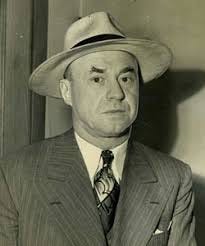Minneapolis Mobster Tommy Banks
As the leader of the Irish Syndicate, he played a significant role in the city's illicit activities
Tommy Banks was a central figure in Minneapolis's organized crime scene during the Prohibition era and beyond. As the leader of the Irish Syndicate, he played a significant role in the city's illicit activities, particularly in bootlegging and gambling.
Rise to Power
Banks began his criminal career under the mentorship of Edward "Big Ed" Morgan. As Morgan aged, Banks assumed leadership of the Irish Syndicate, establishing himself as a dominant force in Minneapolis's underworld. His organization controlled a substantial portion of the city's illegal liquor trade during Prohibition. Eventually, Banks and his rival, Isadore "Kid Cann" Blumenfeld, leader of the Jewish Combination, reached an agreement to divide the city's illicit operations, allowing both groups to prosper without direct conflict.
Criminal Enterprises
Beyond bootlegging, Banks expanded his criminal activities into gambling and other rackets. Despite being a convicted felon, he managed to operate bars and liquor stores in Minneapolis and its suburbs during the 1940s and 1950s. His influence extended into the city's political sphere, with allegations of bribery and corruption facilitating his continued operations.
Legal Troubles
While Banks was linked to several high-profile crimes, including murders, he often evaded prosecution. However, in 1937, he was convicted of tax fraud, a charge that mirrored the legal strategy used against Al Capone. This conviction marked one of the few instances where law enforcement successfully held him accountable.
Later Years and Legacy
In his later years, Banks maintained a lower profile. He owned a cabin on Hungry Jack Lake along Minnesota's Gunflint Trail, suggesting a retreat from his earlier criminal endeavors. Unlike many of his contemporaries, Banks lived a long life, passing away from heart disease in 1985 at the age of 91.
Tommy Banks's story reflects the complex interplay between organized crime and urban development in early 20th-century Minneapolis. His ability to navigate the criminal underworld, maintain political connections, and avoid significant legal repercussions underscores the challenges law enforcement faced during this era.




